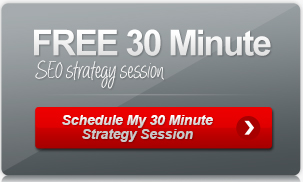
Twenty years ago, the most common way of searching for businesses was flipping through the Yellow Pages and making numerous phone calls to different vendors. Now, with internet and search engines being commonly used and accessible, it’s so much easier – and quicker, to find exactly what you’re looking for.
When the first search engines such as Yahoo! and AltaVista were established, they divided businesses categorically. Meaning, you would go in, put yourself into whatever category you thought fit best for your company, and the person searching you would receive a refined list.
When Google came out, they developed an algorithmic system that basically implied, “We don’t care what category you’re interested in, just type in what you want and our technology will do the rest.”
With that being said, the common characteristics that Google or search engines look for on a website are what we call search engine optimization fundamentals, or SEO fundamentals. Throughout my five years of expertise on SEO fundamentals, I’ve noticed many extensive upgrades, but overall, SEO fundamentals are generally very consistent.
Characteristic #1: The layout of your site
The first thing Google notices is the way your site is laid out and if everything is where it should be. You’ve got to make sure you have the right webpage title, meta tags, and meta descriptions. Google is pretty good about telling you what you need to fix and if something is not where it should be. This is also why it’s important to have somebody focus on your webpage’s SEO fundamentals. Laying out your page correctly makes it easier for Google to find you.
Characteristic #2: Focusing on your content
Content-focus has grown exponentially throughout the last few years, but should still be put after links. Links still have a stronger weighted value inside the algorithm content, but Google focuses on the content of your webpage to make sure the information is being updated. If you don’t change your content, or if your content is being duplicated all over the internet, your website loses credibility and becomes difficult to find.
The driving force behind Google’s massive system upgrade is Google Caffeine. The program crushes massive amounts of data and content to determine who’s updating what and how often it’s being put together. Google Caffeine is a positive reinforcement when you’re trying to increase your exposure, but ensures that you’re updating your site.
Characteristic #3: Determining where you want to rank
Ranking for 30 search terms that are deep inside the content of your homepage is very complex. Rather than aiming for this, you want to rank for about five search terms on your homepage and the rest on your subpages. Google has made it clear that they don’t want someone to have to click three times to get to the information they’re looking for. Because of this, they usually will not direct someone to a homepage. A subpage that has better content, tags and fundamentals are more likely to get hits from Google.
Being number one is the absolute goal for any competitive search term, but isn’t always the best option. You have to determine if it’s better for you to rank on the first page for a general search term, or if you want to rank on the second page for longer keywords that are easier to convert. That’s really what separates people who are just looking for search engine optimization and people who are looking for an increase in exposure. An alternative to the challenges of ranking in Google’s Top Ten for competitive broad match keywords, is understanding your traffic, user behavior and testing less competitive long tail keywords. When we work with our clients often times the data suggests that it is more cost effective to improve rankings for longer tail keywords, and relevant sub-pages. Help the visitor find what they want faster. The best way to do this is helping Google know where that is on your website. Finally make sure the user experience is optimum and your conversion rates will justify the marketing spend.
—
Oftentimes, it takes years before any of our clients, who are already in hyper growth mode, to get the proper brand exposure in order to beat competition. Once we start working with them, we can really get them to start focusing on details that help gain traffic. Once we work on their websites, conversion rates increase and grow quickly – if you improve user experience and conversion rates, it’s the equivalent of doubling your traffic without doubling your traffic.

